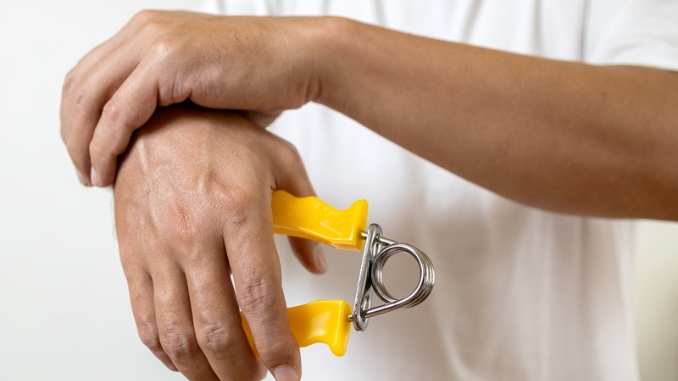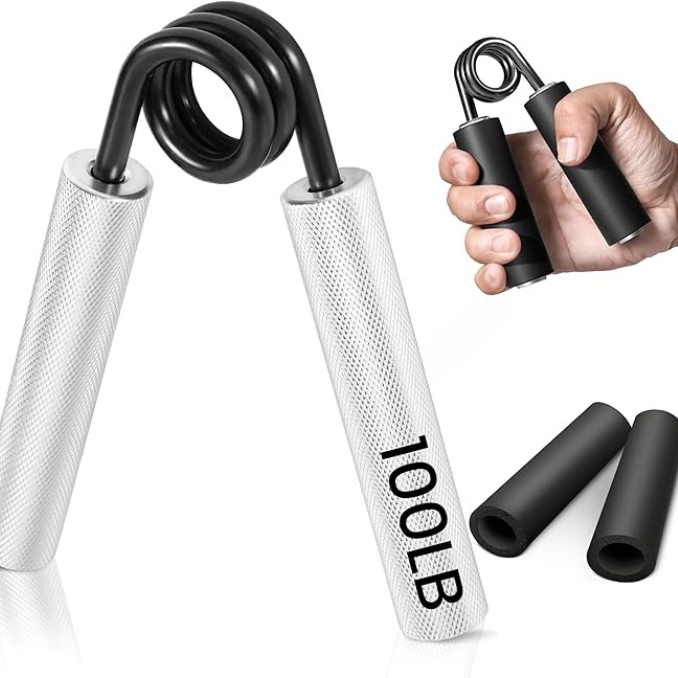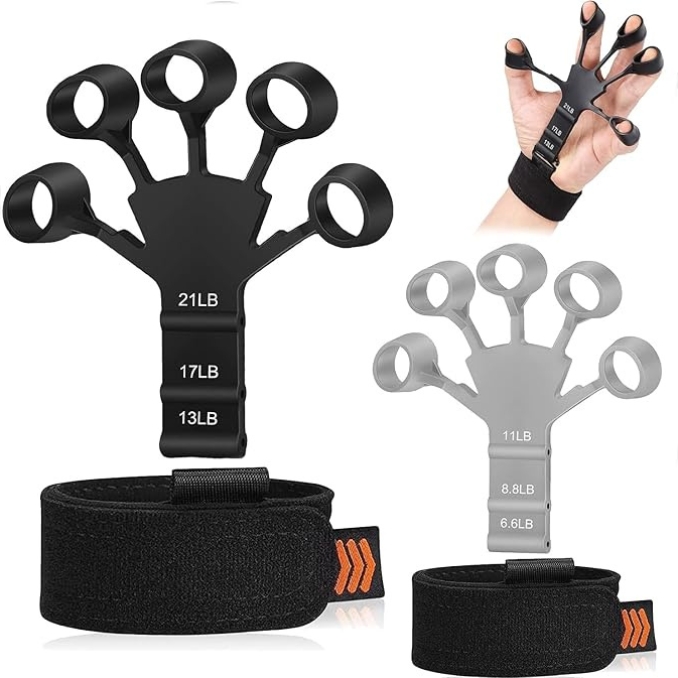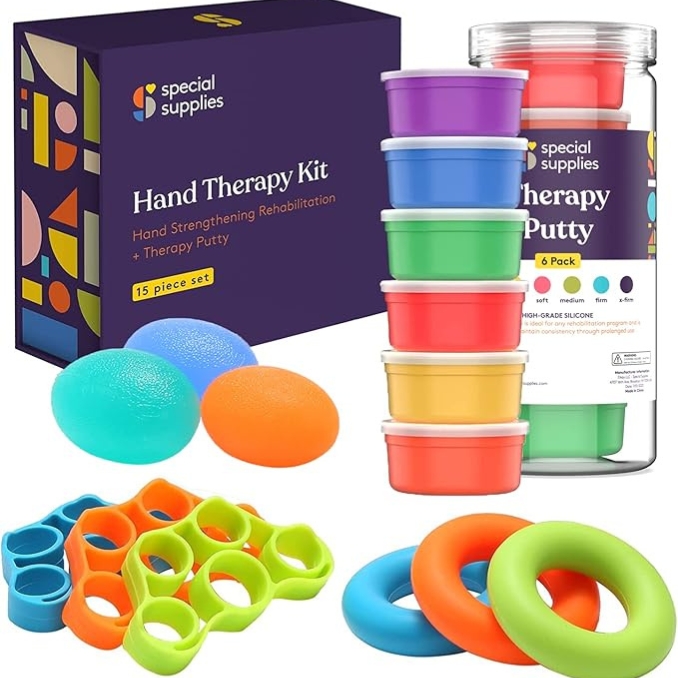Hand exercise tool, like hand strengthening tools and hand exercise equipment, have become essential for improving hand strength and flexibility. Originating from physical therapy practices, these tools were initially designed to help patients recover from hand injuries and surgeries. Hand exercise balls, for example, are widely used to enhance grip strength and dexterity.
Over time, their benefits have extended beyond therapy, becoming popular among athletes, musicians, and anyone looking to maintain healthy hand function. Regular use of these tools can prevent hand fatigue, reduce pain, and improve overall hand performance, making them valuable for daily life and professional activities.
Different Tool Types for Hand Exercise
There are various types of hand exercise tools designed to improve the flexibility and strength of hand muscles. Here are some of the different tool types:
1. Hand Exercise Ball
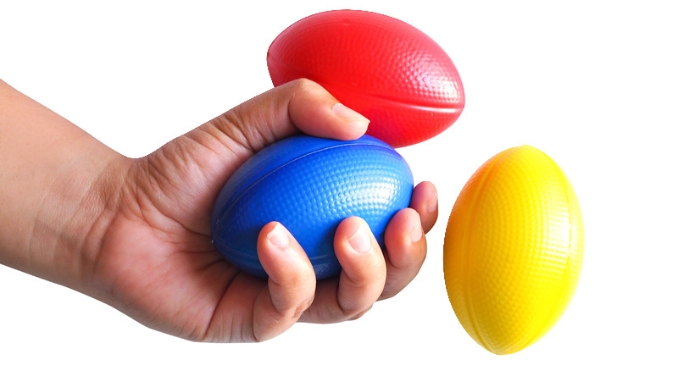
- Made from soft, squeezable materials.
- Help improve grip strength and relieve stress.
- Often used in physical therapy and rehabilitation.
- Elderly people at St. Joseph Nursing Home improved hand strength [1] from 10.56 kg and 14.06 kg with monthly rubber ball exercises.
2. Hand Grippers
- Spring-loaded devices that provide resistance when squeezed.
- Strengthen the forearm, hand, and finger muscles.
3. Therapy Putty
- A pliable substance that can be stretched, squeezed, and molded.
- Offers variable resistance levels to improve hand strength and dexterity.
4. Finger Stretchers
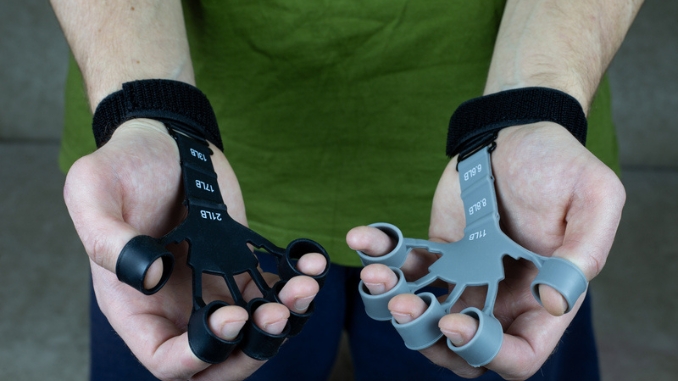
- Elastic bands are designed to provide resistance when spreading fingers apart.
- Strengthen finger extensors and improve flexibility.
Hand Exercise Tools You Can Find on Amazon
1. Grip Strength Trainer
Ideal for people recovering from hand injuries or dealing with arthritis and carpal tunnel. These metal hand grip strengtheners help with healing, boost the strength and flexibility of your forearms, wrists, and also fingers.
2. Stress Ball
| Brand: Candescent Material: Thermoplastic Rubber (TPR) Color: Crystal Blue, Ocean Blue Age Range (Description): Kid Item Weight: 8.78 ounces |  |
Great for ADHD, carpal tunnel, and soreness, these gel balls relieve stress and also tension. Exercise your hands and enjoy the soothing feel while squeezing away anxiety. They also help in injury recovery by reducing stiffness and joint pain through improved blood flow.
3. Finger Stretchers
You can easily strengthen your fingers, forearms, and wrists. These tools also help with arthritis, stroke recovery, and reducing stiffness and pain. Plus, they can be used as a stress-relief toy anytime, anywhere.
4. Wrist Strengthener
| Color: Black Material: Carbon Steel Brand: Sportneer Item Weight: 109 Grams Style: Tension: 7kg/15.5 lbs – Length: 10.1″ | 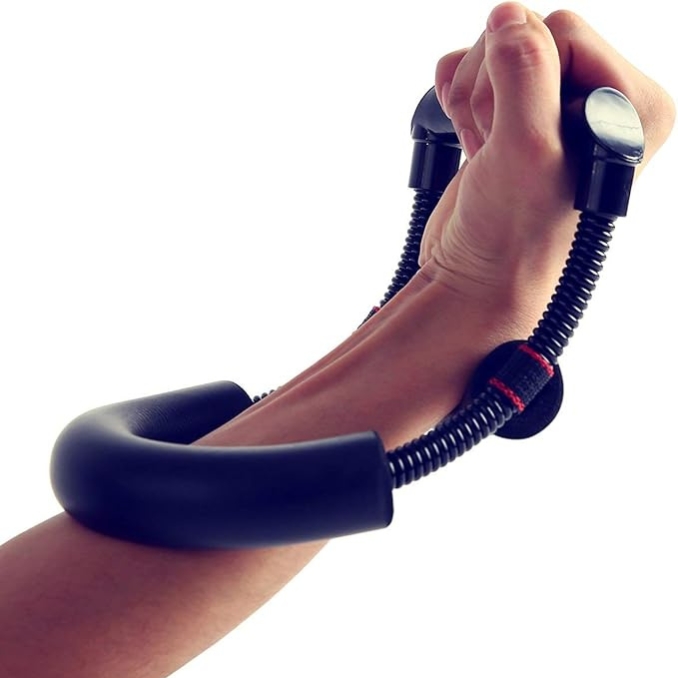 |
This wrist exerciser aims to enhance power, strength, and speed in the forearms, wrists, and then fingers. The Tension is about 7kg, which is ideal for athletes, sportsmen, fitness enthusiasts, professionals, rock climbers, golfers and tennis players.
5. Therapy Putty Kit
Therapy putty is soft and stretchable, perfect for squeezing and stretching to reduce stress and stimulate hands. The ring finger exerciser also helps improve hand strength, flexibility, and dexterity, great for low mobility or post-injury recovery.
Benefits of Using Hand Exercise Tool

Using different tools for hand exercises offers a variety of benefits, catering to different needs and fitness levels. Here are some of the key benefits:
- Hand grippers and exercise balls enhance grip strength for daily tasks and sports.
- Therapy putty and finger stretchers improve flexibility and range of motion.
- Finger therapy balls and strengthening weights boost hand coordination and precision.
- Hand exercise tools also aid in physical therapy for hand injuries and arthritis.
- Squeezing hand exercise balls can effectively relieve stress and tension.
- Using tools like hand exercise balls, hand grippers, therapy putty, and finger stretchers ensures balanced development of both flexor and extensor muscles.
- Regular hand exercises enhance blood flow to the hands and fingers.
- Strengthening hand muscles benefits athletes, musicians, and hobbyists by improving hand strength, enhancing hand coordination, boosting dexterity, increasing endurance, and reducing the risk of injury. Moreover, athletes gain better grip and control, musicians achieve more precise and fluid finger movements, and hobbyists improve fine motor skills for tasks like crafting or playing instruments.
- Hand exercise tools also maintain hand strength and agility, preventing age-related decline.
- Many tools offer adjustable resistance levels, allowing gradual intensity increase.
Common Hand Conditions
Here are different hand conditions where these tools are useful:
1. Arthritis
One of the most common types of arthritis that affects the hands. It occurs when the cartilage in the joints breaks down, leading to pain, stiffness, and reduced range of motion. Hand exercise balls and therapy putty help improve joint flexibility and also reduce stiffness, easing arthritis symptoms.
In one study, hand exercise significantly improves strength and function [2] in rheumatoid arthritis patients. Results show notable improvement in hand force and function after 6 weeks, with even greater benefits after 12 weeks.
2. Carpal Tunnel Syndrome

A condition caused by pressure on the median nerve in the wrist, leading to numbness, tingling, and weakness in the hand. Tools like hand grippers and finger stretchers can help relieve this pressure by strengthening the surrounding muscles.
Moreover, hand exercises using a ball may slow the progression of CTS and provide slight improvements in grip strength and symptoms. This simple exercise can serve as an alternative treatment for mild CTS, particularly in hemodialysis patients. [3]
3. Repetitive Strain Injuries (RSI)
Caused by repetitive hand movements, leading to pain, stiffness, and muscle fatigue. Regular use of therapy balls and finger exercisers can also help manage and prevent RSI by strengthening hand muscles and improving endurance, reducing strain from repetitive activities.
4. Post-Surgical Rehabilitation
After hand or wrist surgery, it’s essential to restore strength and mobility through physical therapy. Hand exercise tools like resistance bands and hand grippers are commonly used to rebuild strength and improve range of motion during recovery.
5. Hand Weakness
Often caused by age, injury, or lack of use, hand weakness can affect grip and daily activities. Strengthening tools such as hand grippers and resistance bands are effective in improving overall hand strength and function, allowing individuals to regain control and precision.
6. Dexterity Issues
These occur when fine motor skills, such as precise hand and finger movements, are impaired. Therapy putty and finger exercisers help improve dexterity by enhancing strength and coordination.
Studies show that hand exercises can increase both strength and dexterity [4], benefiting older adults without compromising coordination.
Good Hand Exercises that You Can Do Without a Tool
1. Wrist Extensor Stretch
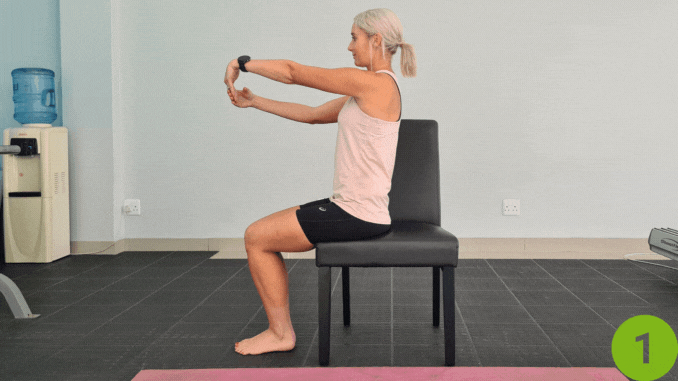
- Stand or sit comfortably in a chair.
- Extend one arm in front of your body at shoulder height with your palm facing upward.
- Using your other hand, slowly bend your wrist toward your body until you feel a gentle stretch along the underside of your forearm and wrist.
- Hold for 15 to 30 seconds, then return to the starting position.
- Repeat the movement on the opposite hand.
- Start with 1 set of 3 to 5 repetitions.
This stretch can also be done standing or with variations, like using a wall for support. It’s an effective way to improve flexibility and improve tension in the wrist and forearm muscles, especially for those who engage in repetitive wrist movements.
2. Hand Squeeze
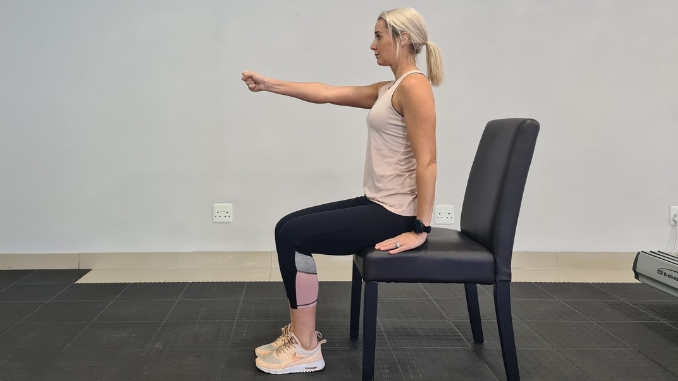
- Start by sitting or standing comfortably with one arm extended in front of you.
- Extend your fingers wide, then slowly curl them into a fist and squeeze tightly, holding for 5-10 seconds before slowly releasing.
- Then repeat on the opposite hand.
- Do this for one set of 10 repetitions with 5-10 seconds hold per hand.
You can also use a stress ball or a hand grip exerciser, squeezing as hard as you can for a few seconds and repeating 10-15 times on each hand. Ensure you breathe naturally, warm up your hands beforehand, and rest between sets.
This exercise, done consistently, helps improve hand strength, flexibility, and can serve as a stress reliever. Hand squeezes are beneficial for individuals with Parkinson’s disease or those looking to enhance their overall hand strength.
3. Hand Stretches

- Begin by extending one arm in front of your body with your palm facing downward and fingers pointing toward the ground.
- Use your other hand to gently stretch your fingers back toward your body, feeling a gentle stretch in your hand and forearm.
- Hold for a few seconds, then release.
- Then do this for one set of 10 repetitions with 5-10 seconds hold per hand.
Conclusion
Hand exercise tools are essential for improving hand strength, flexibility, and function. They benefit athletes, musicians, and daily tasks by enhancing grip and preventing fatigue. When used properly, they can prevent overuse injuries and boost overall hand performance.
Regardless of whether you are working out at home, at the gym, or even in your hotel room… these portable workout tools can help you achieve your health and fitness goals faster and easier than ever. Check out The Ultimate Workout Toolkit now!

Frequently Asked Questions
How often should I use a hand exercise tool?
Use a hand exercise tool 2-3 times a week for best results. Start with short sessions, around 10-15 minutes, and gradually increase as your hand strength improves. Always listen to your body and avoid overworking your hands to prevent strain or injury.
Are there any risks associated with hand exercise tools?
If not used properly, hand exercise tools can pose risks, including strain, overuse injuries, and worsening existing conditions. It’s important to follow instructions and start with low resistance. If your current routine already includes wrist or forearm strengthening exercises, it’s okay to reduce the intensity or frequency of using hand tools, as overuse and redundancy could lead to injury. Always consult a healthcare professional if you have any pre-existing conditions or experience pain during use.
Can hand exercise tool help improve my grip strength or dexterity?
Yes, hand exercise tool can help improve grip strength and finger dexterity. Regular use of tools like hand grippers, exercise balls, and therapy putty strengthens hand muscles, enhances finger flexibility, and improves overall hand coordination. They are commonly used in physical therapy and rehabilitation for these benefits.

Rick Kaselj MS, is a leading kinesiologist and injury specialist as well as co-creator of the best-selling Unlock Your Hip Flexors program. Rick creates exercise programs that help people heal injuries and eliminate pain, so they can go back to living a full, active, healthy life.

